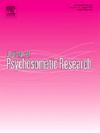在 COVID-19 大流行之前和期间,刚果民主共和国受埃博拉病毒影响的人群中创伤后应激障碍和心理困扰症状的患病率和风险因素
IF 3.5
2区 医学
Q2 PSYCHIATRY
引用次数: 0
摘要
背景埃博拉病毒病(2020年5月19日至9月16日)和COVID-19同时影响了刚果民主共和国赤道省。迄今为止,没有纵向研究探索刚果民主共和国与COVID-19或埃博拉相关的创伤后应激障碍(PTSD)和心理困扰(PD)症状。方法于2019年3月至4月(时间1)和2020年8月至9月(时间2)招募1669名年龄≥18岁的代表性样本。问卷评估PTSD (PCL-5)和PD (K - 10)症状、社会支持、埃博拉和COVID-19暴露及相关污名化。结果T1时PTSD患病率为58.24%,T2时为43.74%,x2(1) = 5.83, p <;.001)和PD症状(T1时为49.44%,T2时为28.94%,x2 (1) = 5.83, p <;.001)从埃博拉疫情到COVID-19大流行期间下降。生活在农村地区的人群一直报告PTSD和PD症状的患病率较高。广义估计方程(GEE)模型显示,与埃博拉相关的污名化是两种创伤后应激障碍最重要的预测因子(B = 0.90, p <;.0001)和PD (B = 1.22, p <;.001)症状,其次是接触埃博拉病毒(B = 0.41, p <;.001, B = 0.56, p <;措施)。与COVID-19相关的污名化仅预测PTSD症状(B = 0.21, p = 0.009)。GEE模型也证实PTSD (B = - 0.78, p <;.001)和PD (B = - 1.25, p <;.001)从埃博拉疫情到COVID-19大流行下降。对于创伤后应激障碍,埃博拉污名化与时间之间存在显著的相互作用(B = -0.40, p = 0.021);对于PD,埃博拉暴露与时间之间存在显著的相互作用(B = -0.36, p = 0.026)。结论本研究证实,埃博拉相关的污名化是心理健康问题最重要的预测因素。基于社区的战略可以处理、减少和消除这一问题。本文章由计算机程序翻译,如有差异,请以英文原文为准。
Prevalence and risk factors of post-traumatic stress disorder and psychological distress symptoms in populations affected by Ebola in DR Congo before and during the COVID-19 pandemic
Background
Ebola virus disease (May 19–September 16, 2020) and COVID-19 simultaneously affected the province of Equateur in DR Congo (DRC). To date, no longitudinal studies have explored symptoms of post-traumatic stress disorder (PTSD) and psychological distress (PD) related to COVID-19 or Ebola in DRC.
Methods
A representative sample of 1669 participants aged ≥18 was recruited in March–April 2019 (Time 1) and August–September 2020 (Time 2). Questionnaires assessed PTSD (PCL-5) and PD (K−10) symptoms, social support, Ebola and COVID-19 exposure and related stigmatization.
Results
Prevalence of PTSD (58.24 % in T1 to 43.74% at T2, x2(1) = 5.83, p < .001) and PD symptoms (49.44 % in T1 to 28.94 % at T2, x2 (1) = 5.83, p < .001) decreased from the Ebola outbreak to the COVID-19 pandemic. Populations living in rural areas consistently reported higher prevalence of PTSD and PD symptoms. Generalized estimating equation (GEE) models showed that stigmatization related to Ebola is the most important predictor of both PTSD (B = 0.90, p < .0001) and PD (B = 1.22, p < .001) symptoms, followed by exposure to Ebola (B = 0.41, p < .001 and B = 0.56, p < .001). COVID-19 related stigmatization only predicted PTSD symptoms (B = 0.21, p = .009). GEE models also confirmed that PTSD (B = −0.78, p < .001) and PD (B = −1.25, p < .001) decreased from Ebola outbreak to the COVID-19 pandemic. A significant interaction was found between Ebola stigmatization and time (B = -0.40, p = .021) for PTSD, and between exposure to Ebola and time (B = -0.36, p = .026) for PD.
Conclusions
This study confirms that Ebola related stigmatization is the most important predictor of mental health problems. Community-based strategies can address, reduce, and eliminate this issue.
求助全文
通过发布文献求助,成功后即可免费获取论文全文。
去求助
来源期刊
CiteScore
7.40
自引率
6.40%
发文量
314
审稿时长
6.2 weeks
期刊介绍:
The Journal of Psychosomatic Research is a multidisciplinary research journal covering all aspects of the relationships between psychology and medicine. The scope is broad and ranges from basic human biological and psychological research to evaluations of treatment and services. Papers will normally be concerned with illness or patients rather than studies of healthy populations. Studies concerning special populations, such as the elderly and children and adolescents, are welcome. In addition to peer-reviewed original papers, the journal publishes editorials, reviews, and other papers related to the journal''s aims.

 求助内容:
求助内容: 应助结果提醒方式:
应助结果提醒方式:


